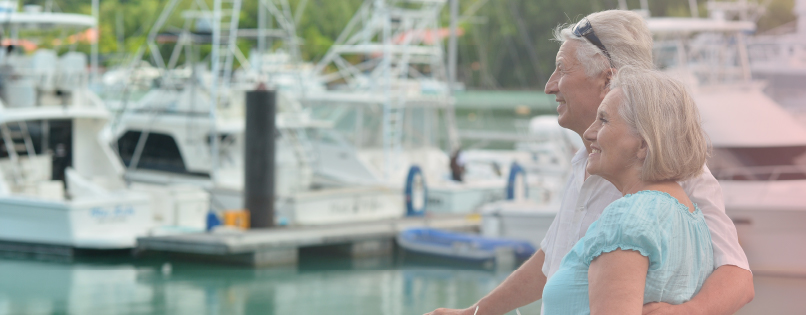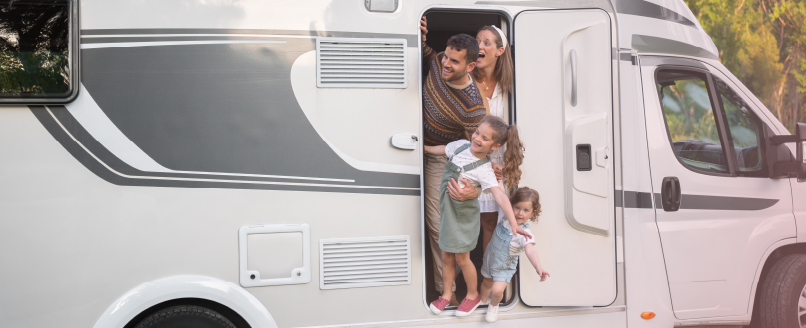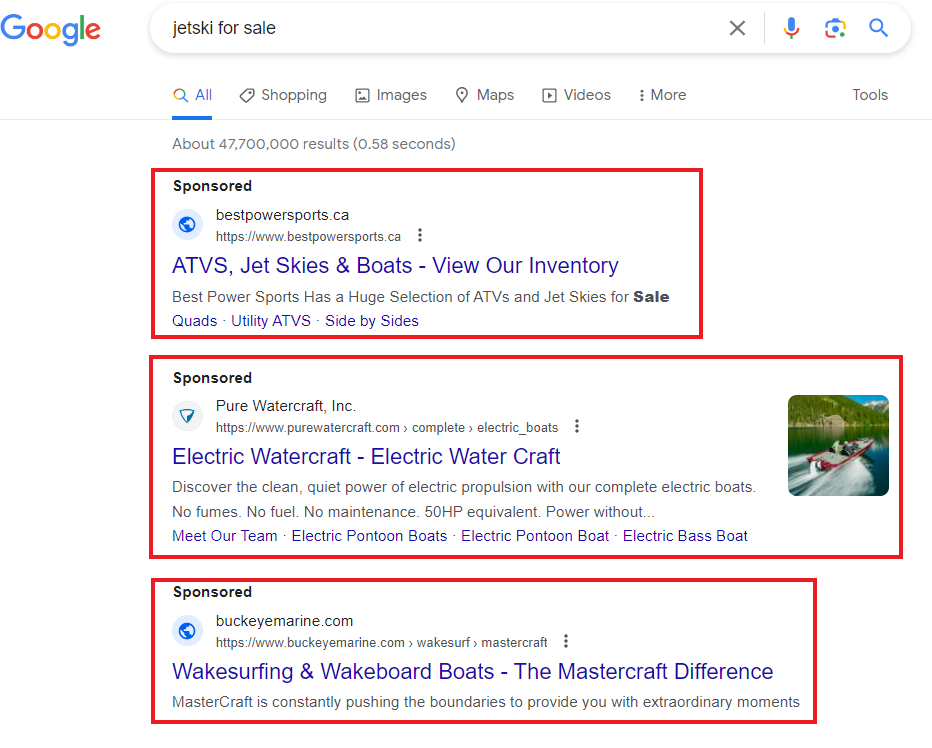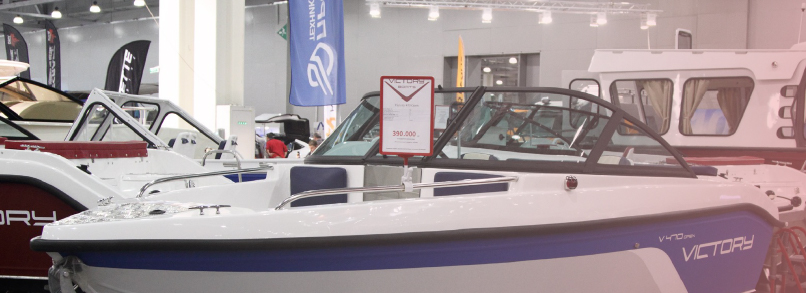Don’t miss out!
Get the latest resources sent directly to your inbox.

Navigating your dealership’s marketing strategy can feel a lot like navigating an area as wide and diverse as the open road or ocean.
RVs, for instance, can be everything from a weekend camper’s cozy retreat to a luxury home on wheels for the committed road tripper. Marine products range from small dinghies perfect for peaceful fishing trips to high-speed Sea Doos designed for adrenaline junkies.
In other words, the customer base is extremely varied. How can your dealership’s marketing efforts appeal to such a diverse group of customers and stand out amongst competitors?
This blog post guides you through several dealership marketing strategies to help you increase sales, create a fan base of loyal customers, and even reel in those elusive new clients.
Understanding your clientele is the cornerstone of any successful marketing campaign.
From retirees fulfilling their lifelong dream of a cross-country trip to young families seeking affordable holiday alternatives or digital nomads looking for a mobile workspace – each group has unique needs and desires.
Moreover, in the current age, there’s also been an increase in environmentally conscious buyers looking for sustainable and eco-friendly RV options.
Understanding these various demographic segments allows you to tailor your marketing messaging to resonate with each group, offering them a solution that aligns with their aspirations.
READ NEXT: 4 Steps to Creating an Effective Customer Experience for Millennials and Gen Z
Customer Surveys: This is a straightforward way to gather information about your customers. Include questions about age, income, lifestyle interests, and what led them to your dealership. Digital tools like IDS Engage can help you send out automated surveys, such as after a parts sale, to see how satisfied customers are after interacting with your dealership.
Customers’ survey responses will help you identify areas for improvement or address issues or concerns promptly. There are also other online tools you can use to create surveys, like Google Forms or SurveyMonkey, that you can then distribute through email or social media.

Sales Data: Review your existing sales data. What models are selling well? Who’s buying them? You can often gather a lot about your customer base from who is buying what.
Website Analytics: Use tools like Google Analytics to understand the demographics of the people visiting your website. What pages are they spending time on? What search terms are they using to find your site? This data can offer valuable insights into your customers’ behavior and interests.
Social Media Insights: Social media platforms like Facebook, Instagram, and LinkedIn provide business accounts with tools to help you understand who your followers are. Look at which posts get the most engagement, who’s engaging with them, and what comments are being left.
Face-to-Face Interaction: Never underestimate the value of a conversation. Talking directly to your customers when they visit your dealership can give you insights that data can’t. Ask them about their needs, wants, and expectations.
You might be surprised to learn that 20% of your customer base is responsible for almost 80% of your sales. This is known as the 80/20 rule, or the Pareto Principle, which applies well to RV and marine dealerships.
Simply put, your existing customers are vital to your business’s success. Keeping this principle in mind, let’s dive into the importance of after-sales service and loyalty programs.

The journey with your customers doesn’t end once they leave your dealership with a new RV or boat—it’s merely the beginning. Offering top-notch customer service and repair services can make all the difference between a one-time purchaser and a lifelong customer.
Timely and efficient repair services not only ensure your customers’ vehicles stay in optimal condition but also show your commitment to their overall satisfaction.
Moreover, providing solid warranties and protection plans demonstrates your confidence in the products you sell and your commitment to your customers. IDS Engage has an automated series of post-sale follow-up emails that can help sell more warranties after a sale.
This not only provides a safety net for your customers but also builds trust, which is crucial in maintaining long-term relationships.
READ NEXT: What to Know About Dealership F&I to Maximize Profitability
To give your dealership a competitive edge, consider establishing a customer loyalty program.
A loyalty program can look as simple as a punch card system— think “Buy 10 routine maintenance services, get 1 free”—or as sophisticated as a points system tied to the dollar amount spent at your dealership.
Consider offering exclusive early access to new models or special discounts on accessories and add-ons. The key here is to offer rewards that align with your customer’s interests and needs.
Regular communication via newsletters, emails, and social media keeps your dealership top of mind and provides opportunities for customers to engage with you.
The power of email marketing is amplified when harnessed with a tool like IDS Engage. Its strength lies in its unique ability to use existing customer data within IDS’s dealership management software. This allows you to create highly personalized email campaigns and deliver tailored marketing messages that speak directly to each customer’s unique interests and purchase history.

IDS Engage also comes equipped with prebuilt automated email campaigns that can be easily set up with just a few clicks, simplifying the process of email marketing without sacrificing effectiveness.
For instance, if you’re rolling out a new line of eco-friendly RVs or a brand-new speed boat model, let your customers know first. If there’s a special promotion or event coming up, make sure your customers are the first to be invited.
In addition, offering valuable tips and advice for RV owners, such as maintenance best practices or must-visit RV parks, not only adds value but also positions your dealership as a trusted expert. This kind of engagement helps foster a strong sense of community around your dealership, turning customers into loyal brand advocates.
READ NEXT: How ArrKaan Trailer & RV Centre Use Personalized Email Marketing to Engage Customers at Scale

A successful referral program capitalizes on the satisfaction of your current customers and their networks. If we consider that people are more likely to trust recommendations from friends and family, a strong referral program could be the game-changer your dealership needs.
There are various strategies for encouraging referrals. One approach could be to offer a discount or a free service to both the referrer and the new customer. You might even consider setting up a tiered referral system, where customers receive increasingly attractive benefits as they refer more people.
The most effective referral programs make customers feel valued for their efforts, encouraging them to continue spreading the word about your dealership.
Never underestimate the value of becoming a part of the local community.
Involvement in local events and outdoor activities raises your dealership’s profile and builds trust and respect among potential customers. People appreciate businesses that give back to the community, and this goodwill can often translate into sales.
Consider sponsoring local outdoor events, organizing educational workshops about RVs and boats, or even participating in local community service projects. You might also want to consider partnering with local outdoor clubs, offering exclusive discounts to their members.
These strategies not only build a positive reputation but also connect you with potential customers within the community.

This method involves creating and promoting content that is designed to be easily discoverable by search engines, which can help drive traffic to your website.
Here’s how it works: You create valuable, engaging content—like blog posts, how-to guides, or product reviews—that is related to RVs and marine products. This content should be geared towards your target audience and aim to answer common questions or solve problems they might have.
For instance, you might write a blog post about “How to Prepare Your RV for Winter” or “5 Tips for First-Time Boat Owners.”
Once you’ve created your content, you optimize it using relevant keywords. These are words or phrases that your target audience might use when searching for information about RVs or marine products. When your content is properly optimized, it’s more likely to appear in search results when someone uses those keywords.
The key benefit of this approach is that it attracts customers who are already interested in what you’re selling. If someone is searching for information about RVs, there’s a good chance they’re considering buying one. If they come across your content during their research, they’re likely to see your dealership as a valuable resource, which can make them more likely to consider buying from you.
READ NEXT: How to Build a Marketing Strategy for the Next Generation
With the right mix of digital and traditional marketing strategies, paired with an enticing showroom experience, you can steer your dealership on a course toward increased sales.
Pay-Per-Click (PPC) advertising can be another powerful tool in your digital marketing arsenal. By bidding on keywords relevant to your products, you can position your ads in search engine results and only pay when someone clicks on your ad. When done right, PPC can drive significant traffic to your website and, ultimately, increase sales.

As for social media marketing, it’s not just about promoting your products—it’s about engaging with your audience and showcasing the RV lifestyle. This could mean sharing customer stories, posting breathtaking photos from popular RV locations, or even hosting virtual Q&A sessions about RV ownership.
Remember, social media is a two-way street, so engage with your audience, respond to their comments, and build a community around your brand.
Despite the digital age, traditional marketing tactics can still be effective. Print advertising, whether in local newspapers or niche lifestyle magazines, can help you reach a broader demographic, especially if you’re targeting an older clientele who still prefers print media.
Direct mail and promotional materials like brochures and flyers can provide tangible reminders of your dealership and its offerings. A well-designed flyer about the latest RV model or a postcard inviting locals to an upcoming boat show at your dealership can leave a lasting impression.
Finally, your showroom is the face of your dealership, and its layout and presentation can significantly influence sales. A well-organized, welcoming showroom can entice customers to explore and linger, increasing the likelihood of a sale. Display your best sellers prominently and make sure all models are clean and well-maintained.

Of course, an enticing showroom would be incomplete without knowledgeable sales staff. They should be trained to answer any questions and provide detailed information about each model, thereby building trust with customers.
Consider hosting special events and promotions at your showroom. Whether it’s a summer sale, a new model launch event, or a weekend barbecue for local RV and boating enthusiasts, events can draw in crowds and create a buzz around your dealership.
As we gaze into the future of the RV and marine industry, it’s clear that personalized, customer-centric marketing strategies will continue to take center stage.
Whether it’s by deepening customer understanding, crafting innovative marketing strategies, or embracing new digital marketing methods, RV dealerships have a multitude of avenues to boost sales and cultivate customer loyalty.
Yet, one constant remains amidst the rapidly evolving landscape: dealerships that stay ahead of the curve and adapt to changing trends are the ones poised to reap the most success.
Get the latest resources sent directly to your inbox.